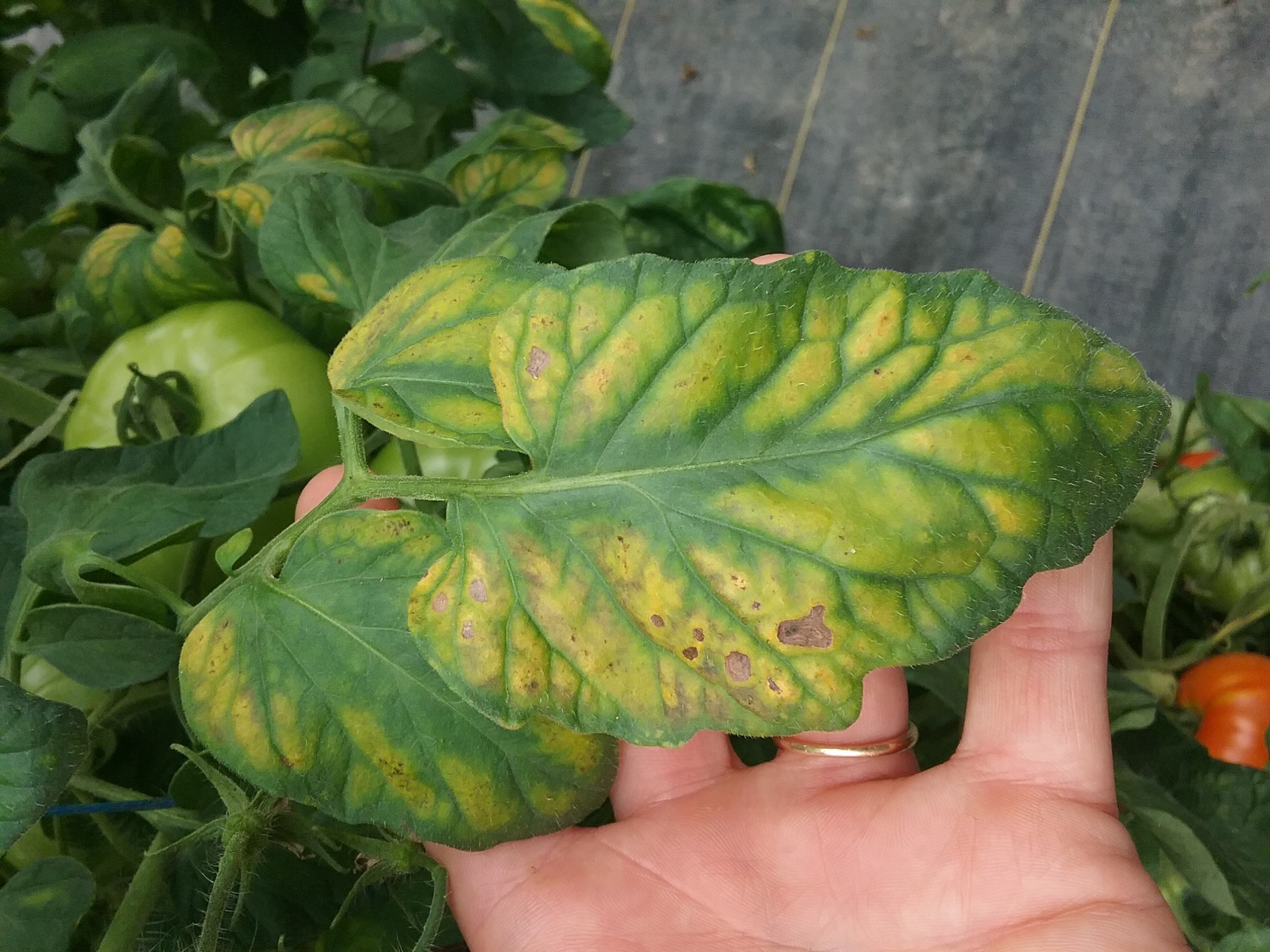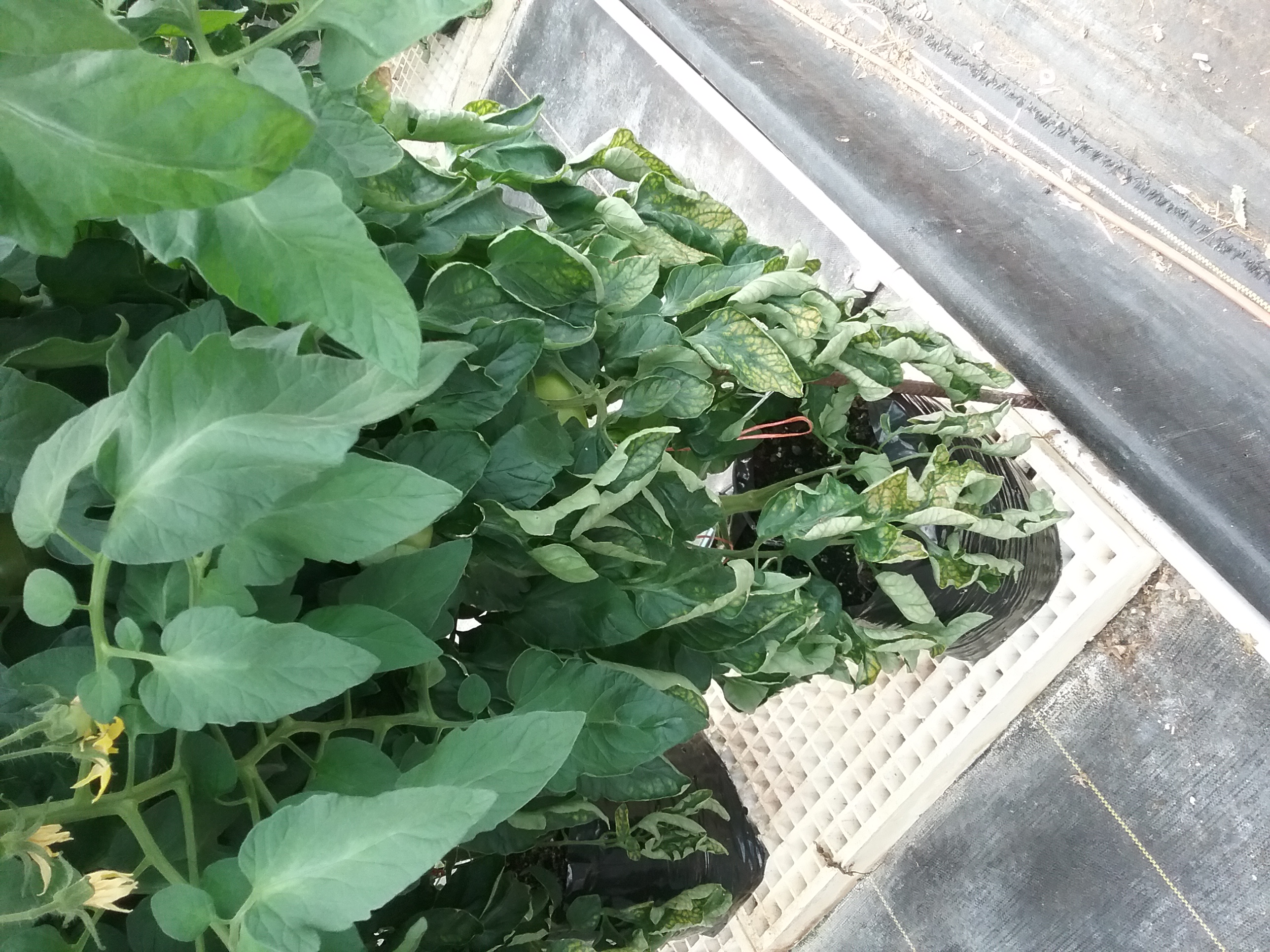Interveinal Chlorosis
Return to Physiological Disorders
Interveinal chlorosis is often seen on tomatoes and sometimes peppers during heavy fruit set. It appears on the lower leaves (older growth) as yellowing between the leaf veins. This is attributed to a magnesium deficiency in the plant that may be caused by a magnesium deficiency in the soil, but also may be caused by low soil pH (below 6.0) which makes magnesium less available to the plant. It also may be caused by excess potassium in the soil which causes reduced uptake of magnesium.

Interveinal chlorosis (yellowing between the leaf veins)
on tomato.
(Photo: Rachel Rudolph, University of Kentucky)

Interveinal chlorosis may occur on lower (older) leaves, and is often
a symptom of magnesium deficiency in tomatoes.
(Photo: Rachel Rudolph, University of Kentucky)
Management:
- Conduct annual soil testing several months prior to planting as soil pH alterations take time.
- A soil test will also indicate whether magnesium applications are necessary.
- Avoid excessive applications of phosphorus.
- During the growing season, a foliar/tissue test will indicate a deficiency in the plant. If a deficiency exists, magnesium oxide or magnesium sulfate may be applied.
